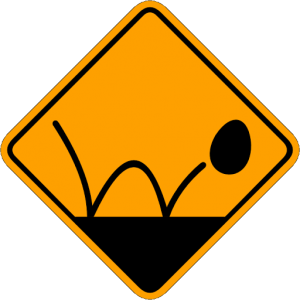You think an egg can’t bounce? Well, it can….and it is simple, but will take four days to prepare. Have someone else do this experiment too and have a contest to see whose egg can bounce from the highest height.
You will need:
- One hard-boiled egg
- White vinegar – one cup (possibly more)
- Container deep enough to cover the egg in vinegar (a tall drinking glass or deep bowl will work)
- Paper towels or dish towel (to dry the egg)
Instructions:
 1. Place the boiled egg in the container.
1. Place the boiled egg in the container.
 2. Completely cover the egg with vinegar. No part of the egg should be sticking out of the vinegar.
2. Completely cover the egg with vinegar. No part of the egg should be sticking out of the vinegar.
 3. Let the egg soak in the vinegar for four days. The vinegar will get cloudy over this period of time.
3. Let the egg soak in the vinegar for four days. The vinegar will get cloudy over this period of time.
4. After the fourth day, the vinegar will have dissolved the eggshell. Take the naked egg out. It will feel rubbery.
 5. Place the naked egg on a couple of layers of paper towels or the dish towel so the liquid can drain off the egg.
5. Place the naked egg on a couple of layers of paper towels or the dish towel so the liquid can drain off the egg.
 6. With your dry egg, start bouncing from about 2 inches high at first. Keep bouncing, starting a little higher each time.
6. With your dry egg, start bouncing from about 2 inches high at first. Keep bouncing, starting a little higher each time.
 An eggshell is made of calcium carbonate. The vinegar contains an acid called acetic acid. When calcium is exposed to the acid it reacts. In the case of experiment, the reaction causes the eggshell to dissolve, but does not effect the membrane inside the shell (the white part of an egg) since it is made of different elements. You can try this experiment with a raw egg to create a rubbery egg….but don’t bounce the raw egg experiment, the egg may burst open.
An eggshell is made of calcium carbonate. The vinegar contains an acid called acetic acid. When calcium is exposed to the acid it reacts. In the case of experiment, the reaction causes the eggshell to dissolve, but does not effect the membrane inside the shell (the white part of an egg) since it is made of different elements. You can try this experiment with a raw egg to create a rubbery egg….but don’t bounce the raw egg experiment, the egg may burst open.












Leave a Reply